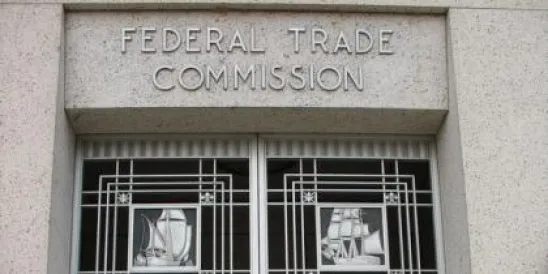Companies should begin regularly collecting required data—in particular revenues by North American Industry Classification System code and information about “associates”—in advance of need to file Hart-Scott-Rodino notification.
On July 7, 2011, the Federal Trade Commission (FTC) announced final changes to the rules and notification form parties to certain transactions must submit under the Hart-Scott-Rodino (HSR) Antitrust Improvements Act of 1976, as amended. The HSR Act requires parties to notify the FTC and the U.S. Department of Justice (DOJ) of proposed transactions that meet the act’s jurisdictional thresholds and to observe a statutory waiting period while the agencies review the competitive impact of the transaction. The FTC proposed changes to the HSR rules on August 13, 2010, and solicited public comments, some of which the FTC addressed in its final rules. (For more information on the previously proposed changes, see McDermott’s On the Subject “FTC Proposes Changes to Hart-Scott-Rodino Notification Rules and Form.” These changes eliminate disclosure requirements for information the FTC and DOJ no longer find helpful in their initial antitrust review, and introduce new provisions to capture additional information to make clear competitive relationships and implications not revealed by current HSR filings. The changes also correct minor oversights from the FTC’s 2005 rulemaking related to unincorporated entities. The final rules will take effect in mid- to late-August 2011, 30 days after they are published in the Federal Register.
As detailed below, the most significant of the changes include the following:
- Introduction of the concept of “associates,” which will require disclosure of “managed” entities (whether or not “controlled”)
- Formalization of certain interpretations of what constitutes a “4(c) document” by adding additional document disclosure requirements
- Revisions to the revenue data parties are required to report
While the new rules decrease the burden of reporting by eliminating the need to gather base-year revenue data, they will increase the burdens in other areas.
Introduction of “Associates”
Perhaps the most significant change to the HSR rules is the introduction of the concept of “associates.” The current HSR form only requires information from the ultimate parent entities of the parties to the transaction, including data on any entities they “control.” The HSR control rules are specific, and in many cases an ultimate parent entity does not control portfolio companies or other entities that are managed, but not majority owned. For example, two investment funds managed by the same organization may not be under common control for HSR purposes, and so if one fund made an acquisition, its form would not reveal any information regarding the operations of the second fund. The agencies view this data issue as a shortcoming of current HSR filings because they are interested in assessing the potential competitive impact of acquisitions by entities that have or manage—or are managed by entities that have or manage—overlapping interests in the same industry as the target.
To address these concerns and gather relevant information, the FTC’s revised rules introduce the concept of “associates.” The definition of associate effectively captures entities under common management, as well as those entities controlled or managed by an associate. “Managing” refers to “the right, directly or indirectly, to manage the operations or investment decisions” of an entity involved in the proposed transaction (whether the ultimate parent entity or the acquisition subsidiary).
With respect to associates, the proposed changes will require acquiring parties to report information including the following:
- Associates’ significant minority holdings (i.e., more than 5 percent but less than 50 percent) of entities that have revenues in North American Industry Classification System (NAICS) codes that overlap with the acquired business
- The names of those entities that associates control that the acquiring person believes derive revenues in those NAICS codes that overlap with the acquired business, and the geographic areas in which the associates derive those revenues
The FTC recognizes that because associates are not controlled by the acquiring person, the acquiring person may not have perfect visibility into the operations of their associates. As such, acquiring persons are only required to supply information about associates based on their knowledge and belief.
Additional Document Disclosure Requirements: 4(d) Documents
Item 4(c) of the HSR notification currently requires submission of documents prepared by or for an officer or director “for the purpose of evaluating or analyzing the acquisition with respect to market shares, competition, competitors, markets, potential for sales growth or expansion into product or geographic markets.” The FTC has long interpreted Item 4(c) as requiring parties to submit offering memoranda and other documents prepared by an investment banker for purposes of soliciting expressions of interest from potential buyers of the target. Despite this interpretation, some parties have taken the position that these documents do not fit squarely within Item 4(c) because they may not have been prepared “for the purpose of evaluating or analyzing” the notified transaction between the seller and the chosen buyer.
In an effort to formalize the FTC’s interpretation of Item 4(c) regarding documents prepared for bid solicitations, the FTC has added an Item 4(d) and expanded the scope of documents parties are required to submit. The FTC’s proposed language for Item 4(d), published in August 2010, would have extended significantly beyond the parameters of Item 4(c) by capturing ordinary course studies and competitive analyses prepared within two years prior to submission of the HSR filing, even if they had no connection to the notified transaction. Commenters expressed concern regarding the seemingly over-broad nature of the proposed Item 4(d), and the FTC responded by clarifying and limiting the scope of the required documents in the final Item 4(d) instructions.
Item 4(d) will require parties to submit several categories of documents, including (i) Confidential Information Memoranda that specifically relate to the entity or assets to be sold, (ii) documents prepared by third-party advisors during an engagement or for purposes of seeking an engagement that specifically relate to the entity or assets to be sold, and (iii) certain documents evaluating synergies or efficiencies for the purpose of evaluating or analyzing the proposed acquisition. In all instances, parties will not be required to search for documents beyond those prepared by or for an officer or director of the acquiring or acquired persons, or of the acquiring or acquired entities.
While the requirement to submit documents related to the synergies or efficiencies of a proposed transaction is new, the remainder of Item 4(d) will not require more than what most parties were already submitting with their HSR notifications. As such, the final Item 4(d) will not pose a significantly increased burden to filing parties, but will require increased diligence to ensure compliance.
Changes to Required Revenue Data
Currently, the HSR notification and report form requires revenue data by NAICS codes for a base year—currently 2002—and the most recently completed year. The FTC recognizes that providing data for a base year can be burdensome for some parties while not advancing the agencies’ analysis of the transaction. The final rules eliminate the requirement for base-year revenue data, but also refine the data required for the most recently completed year. For example, parties will be required to provide manufacturing revenues for the most recently completed year by the more detailed 10-digit NAICS codes instead of the more general seven-digit NAICS code. Further, whereas the current form only requires revenues derived from U.S. operations, the revised rules require revenue data for products manufactured outside the United States but sold into the country. This will enable the agencies to better evaluate the parties’ operations affecting the U.S. economy.
Preparing Filings Under the New Rules
While many of the proposed changes are ministerial in nature and will decrease parties’ burdens in preparing HSR notifications, some of the changes will substantially increase the compliance burden for certain types of clients. Multinational businesses with overseas manufacturing operations that sell into the United States will need to gather and report revenue data from those overseas operations, which has not previously been required. Private equity funds will need to report information on associates’ operations, which they have not previously had to gather and report. Also, the addition of Item 4(d), while not significantly adding to parties’ burden, will require some additional time to collect responsive documents.
Firms that are likely to have HSR filings should consider the changes to their processes that may be required so they can respond quickly and efficiently as the need for a filing arises. For example, companies could begin to collect revenue data by NAICS code, subsidiaries, shareholders, minority holdings and, in particular, associate information (and the industries in which they operate) while not under the pressure of preparing an HSR filing in short order. Firms could implement processes to update that information annually or immediately after any new acquisition, disposition or investment.






 />i
/>i

